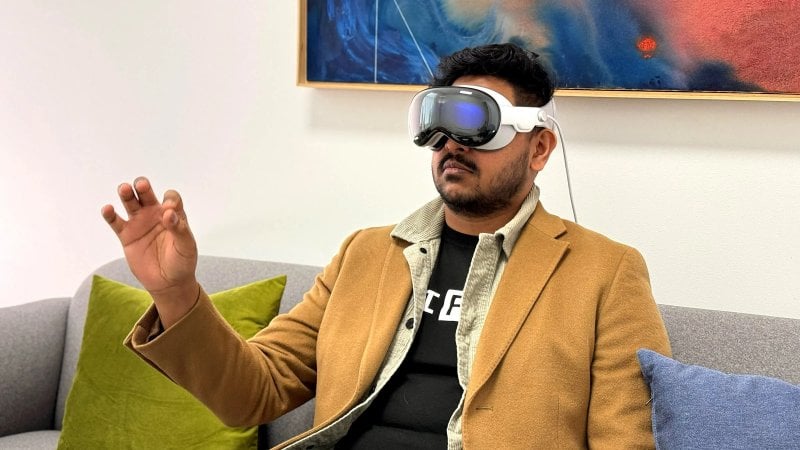Apple's Vision Pro initially captured the interest of enthusiasts thanks to its attractive design and cutting-edge technology.
Launched just two months ago, it attracted huge participation, seeing its initial stock sell out almost instantly.
However, since then, enthusiasm for Apple's first mixed reality headset has waned, and sales are perpetually slowing at various outlets.
Its success has gradually faded over time, probably due to the high price and lack of a clearly defined “use case”..
Demand for demonstrations of the headset has also fallen to very low levels since launch.
Worse yet, many people who make appointments to try Vision Pro simply never show up again.
Race for cover
Gurman shared his personal experience with Vision Pro, highlighting his own poor practicality both for work and media consumption.
The main reasons could be traced back to the inconvenience in using the batteries, starting the headset and interfacing with it; in almost every respect it would therefore be less convenient than other devices such as laptops or tablets.
Several reports from customers have ratified this lack of convenience, with many admitting that they very rarely use it in public.
Common criticisms also include the discomfort of wearing the headset, the difficulty in finding applications in the dedicated app store and the sense of isolation caused by technology.
The analyst therefore suggests that Apple should focus on improving its strategy and offering a more accessible version of the headset to increase its adoption, considering that the virtual reality sector seems not to be inclined towards wider diffusion.
Disaster announced?
Industry experts had predicted that interest around the Vision Pro would gradually decline over time, turning the headset into a niche product, at least until Apple launched a more accessible version.
These predictions appear to have come true.
L'lack of popular apps like Netflix, Spotify and YouTube on Vision Pro may have contributed to its initial decline.
Previously, Netflix co-CEO Greg Peters said the company would evaluate the situation before investing in an app for the Vision Pro.
At the end of the day, it appears that Netflix, like other companies, is now considering not developing for this platform at all.
Plus, the operating system visionOS it is still in its infancy and third-party developers have yet to adapt their apps for the platform.
Apple, in response, tries to adopt some countermeasures.
Recently, it introduced the “space characters“, an option to have virtual companions in the world of Vision Pro, although the first attempts in this direction were considered a bit disturbing.
To improve comfort, Apple has introduced a double ring headband, designed to reduce pressure on the face: paradoxically, some users have criticized this solution, believing it lacks the typical elegance associated with Apple products.
Despite this, Apple is already working on the second generation of Vision Pro, which should include significant improvements along with a more accessible price, with the aim of turning the headset into a mass product. Furthermore, market expansion into other countries could further stimulate sales in the future.
#interest #Apple #Vision #Pro #faded

